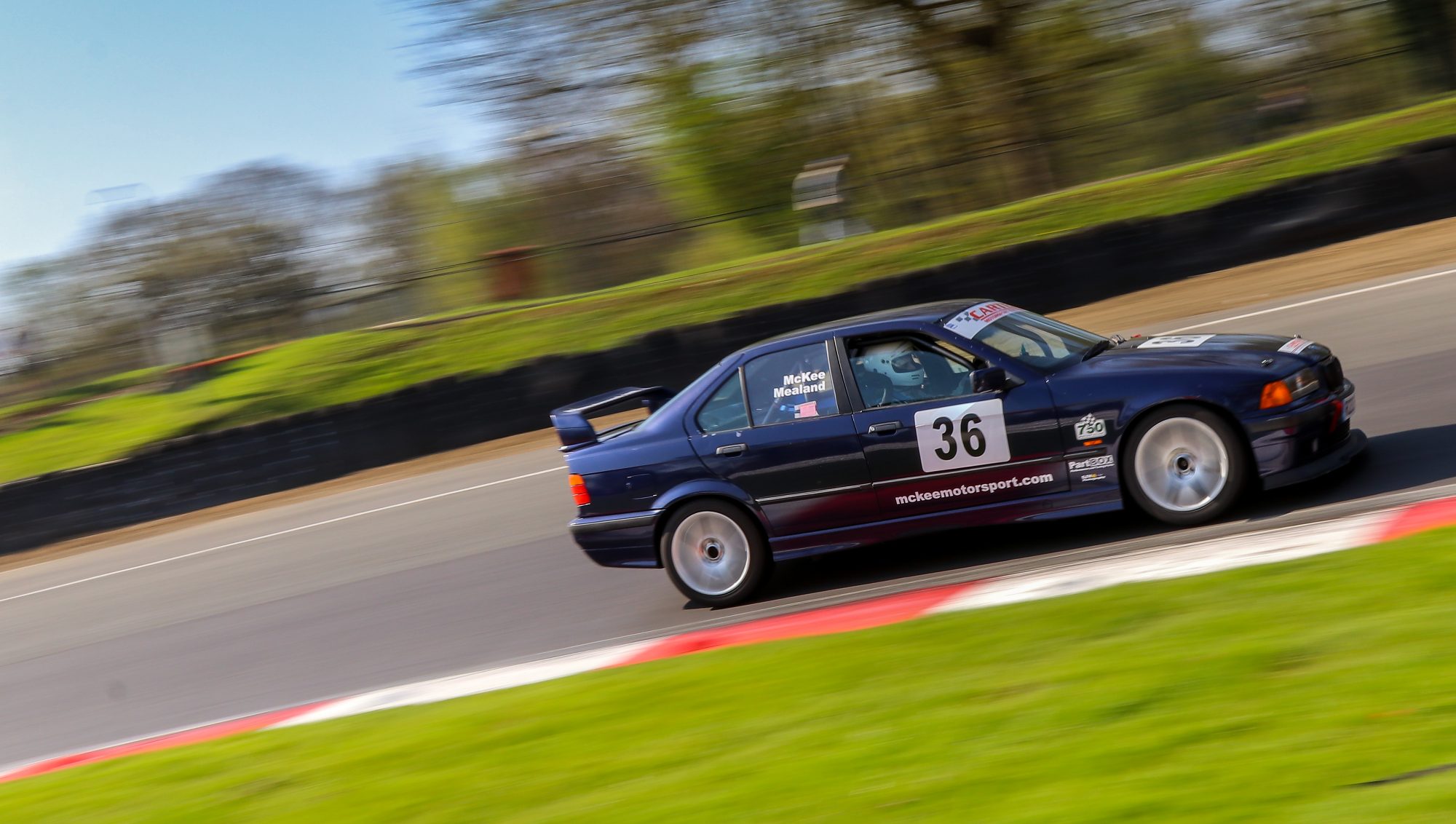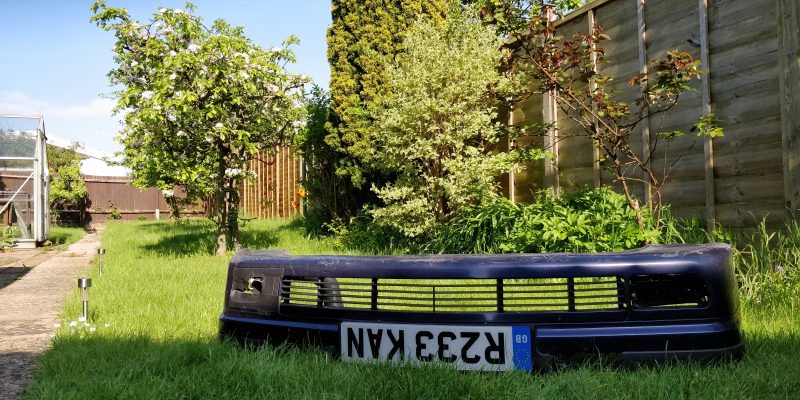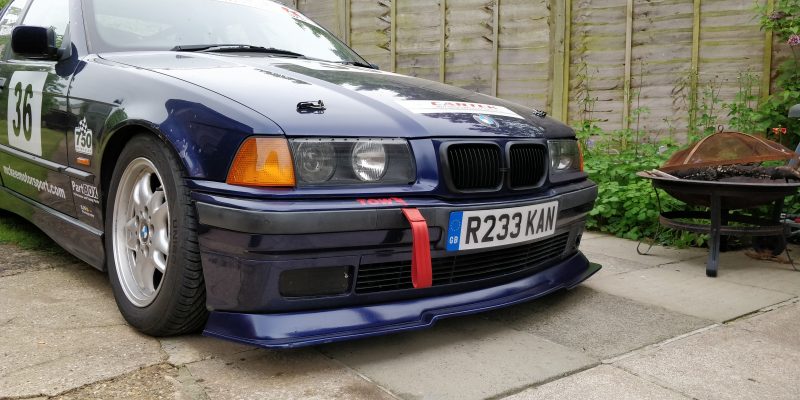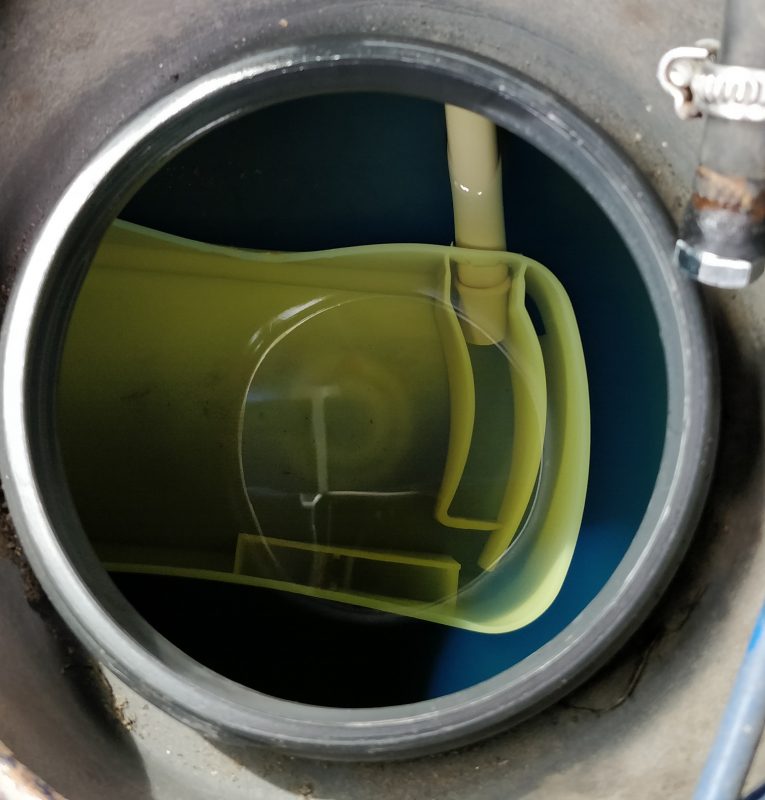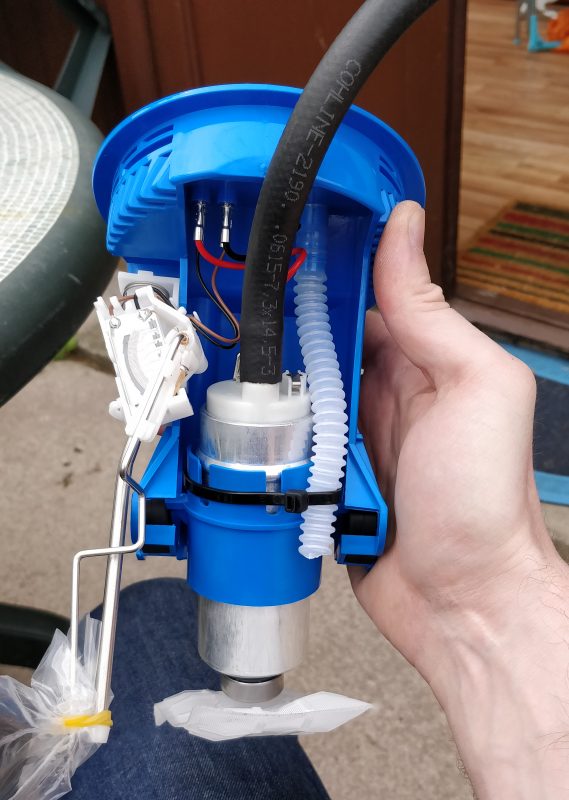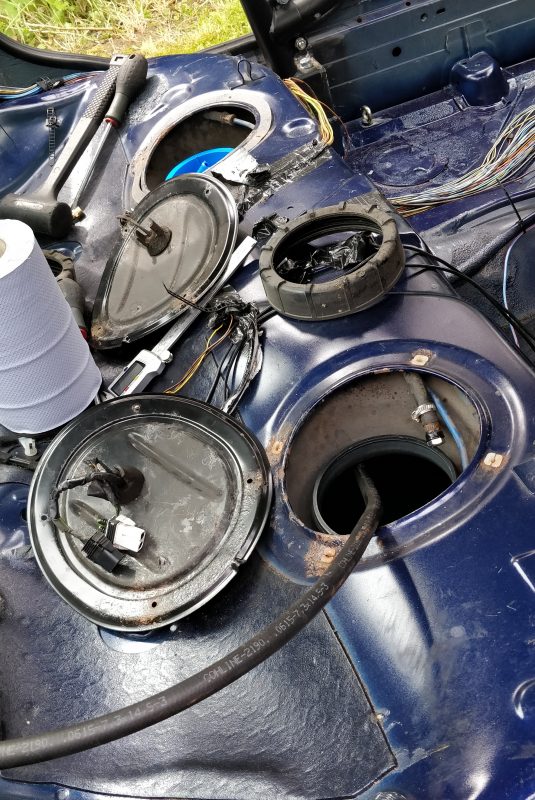There’s little doubt that buying a pre-built race car offers far better value, both in terms of cash and the time you need to invest, but I really enjoy competing with a car that I’ve developed and prepared myself. It does, however, mean that the time between races is filled with work to improve it – after every meeting, even if the car’s performed well, I find myself pondering the next few upgrades. My aim is the make sure the car is faster, better to drive or more durable every time it goes out.
It’s also nice if I can make it prettier, too, so it’s about time the crash-damaged nosecone and kidney grilles were replaced. A pattern nosecone cost the princely sum of £38 on eBay, and the fit was surprisingly good! It even painted up sort of OK, and I finally got around to painting the splitter too. The matches are far from perfect but I think the result looks far more cohesive than before.
But now, the focus is on the fuel system. The appalling fuel starvation issues we suffered in the last race at Brands Hatch were down to a combination of factors: the E36 fuel tank is fundamentally unsuited to race use; the poor-quality fuel pump was nearing the end of its life; and the heat of the day and temperatures inside the car in racing conditions meant hot fuel, making it even harder to deliver the required pressure. So here’s a DIY on how to do a dual fuel-pump conversion on an E36.
The fuel tank is a saddle type, with two main chambers separated from each other by a high, narrow section straddling the driveshaft. Sensibly, the filler runs into the side with the engine’s supply pump, but dynamic motion and the returning fuel from the rail both conspire to keep fuel in the other side. It’s pulled back over by a siphon pipe that sits right next to the pump inlet, but it turns out that when you’re really throwing huge volumes of fuel into the wrong side of the tank by repeated high-G right-hand turns, the siphon arrangement can’t cope. Result: you have loads of fuel, but all in the wrong place, and even with as much as half a tank onboard the engine starves right when you need it least.
There are a number of solutions – I went for the simplest. This is where the original siphon pipe feeds, into the reserve sump directly under the fuel pump (removed). To get more fuel across, rather than relying on the depression caused by the main pump pulling fuel through this siphon, we can force it through with a second pump. Lucky for us, the E36 is designed with exactly the same tank fittings on both sides. As standard, there’s just a sender unit and the fittings for the return pipe from the engine – but instead, we can fit a lightly modified pump.
This standard E36 pump should be pulling fuel from the bottom of the tank and feeding it through the corrugated plastic pipe to a little nipple in the top of the housing, to the engine feed hose. Instead, it’s fitted on the “wrong” left-hand side of the tank, and the engine return flow comes through the corrugated pipe towards the pump inlet. The return flow, and the other contents of the left-hand side of the tank, are pumped into a length of hose that runs to the opposite side of the tank and into that reserve sump that used to hold the siphon.
A general view showing the hose running across, before it’s cut down and slotted into the reserve sump:
An important note at this point is that if doing this approach with a hose inside the tank, you must use hose to SAE J30 R10 spec. Most fuel hose is not designed to be submerged in fuel, so it’s only coated on the inside, not the outside. The fuel will attack and degrade lesser hoses over time. I’m using Cohline 2190, which was £18 a metre on eBay. I needed 900mm to get across the tank. For the transfer pump, I used a £38 pattern part as I’m not relying on it for supply to the engine. For that, I fitted an OEM-spec Siemens VDO pump which cost £109.
The most elegant wiring solution I’ve seen is to take a positive trigger from the main supply pump, so that the transfer pump won’t run unless the engine’s running. Supply power from your favourite big positive cable, and fit a switched earth so you can turn the pump off when not required – such as motorway cruising, or when you have ample fuel in the tank. I added a 15A inline fuse, as with the standard pump setup, but I can’t imagine ever tripping it. I’ll need to get out on circuit to prove the system works properly, but on the road it seems to function as intended.
Adding this second pump weighing 800g has the unlikely effect of making the car 18kg lighter – we can now run with 25 litres less fuel onboard, perhaps more!
A final treat remains in the bag. The well-recommended and very helpful Enda Ward of EndTuning had the opportunity to prove his business card correct:
An ECU recalibration to take full advantage of the M50 inlet manifold was well overdue. As well as a dramatic increase in torque across the rev range, to now hit the 220bhp target figure for Class C, we also have an increased rev limiter from 6500 -> 7000rpm, and the idle raised a little from 650 -> 750rpm. The former actually increases top speed, as so short is the diff that we’d hit the limiter in fifth at some circuits, and also lets us “stretch” gears a little for those times where it isn’t worth changing up before a corner. The latter is to get a bit more water pump flow rate and give the alternator an easier time running the fan at idle, but it also reduces vibration with the polyurethane engine mounts, which is nice in traffic.
As an aside – since so much has changed this month! – the front lower wishbone rear “lollipop” bushes are now eccentric M3 parts in Powerflex Black, forty whole pounds courtesy of Lloyd Chafer. It took a vice and some big plates to get these rock-hard bushes in the carriers, thanks to Latham for that! A good sign, since these react much of the steering torque. They also add significant caster, a trip to the geometry ramp is in order to find out how much.
So, all in? We have a car with more power and more feel that should be able to make far better use of its fuel, while looking much nicer at the same time. Our Rockingham track day on 7th June, only two days before the race, will show just what we’ve managed to achieve!
Sam
